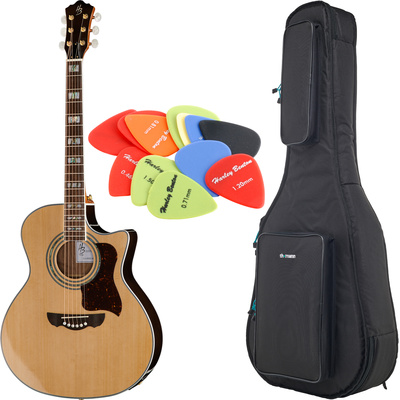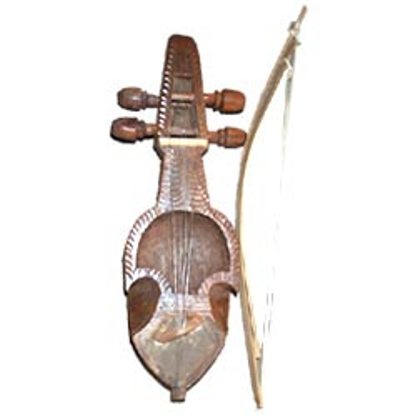The air stream must be directed at the correct angle and velocity, or else the air in the flute will not vibrate. A study in which professional players were blindfolded could find no significant differences between instruments made from a variety of different metals. In two different sets of blind listening, no instrument was correctly identified in a first listening, and in a second, only the silver instrument was identified. The study concluded that there was "no evidence that the wall material has any appreciable effect on the sound color or dynamic range of the instrument".
In its most basic form, a flute can be an open tube which is blown like a bottle. There are several broad classes of flutes. With most flutes, the musician blows directly across the edge of the mouthpiece, with 1/4 of their bottom lip covering the embouchure hole. Flutes can be played with several different air sources.
Friday, July 26, 2013
DRUM SET
The drum is a member of the percussion group of musical instruments. In the Hornbostel-Sachs classification system, it is a membranophone. All types of drums, such as timpani for example, are tuned to a certain pitch. Often, several drums, other than timpani drums, can be arranged together to create a drum kit. There is usually a resonance head on the underside of the drum, typically tuned to a slightly lower pitch than the top drumhead. Several factors determine the sound a drum produces, including the type, shape and construction of the drum shell, the type of drum heads it has, and the tension of these drumheads. Different drum sounds have different uses in music. The second biggest factor that affects drum sound is head tension against the shell. When the hoop is placed around the drum head and shell and tightened down with tension rods, the tension of the head can be adjusted.
THE GUITAR
The guitar is a string instrument of the chordophone family constructed from wood and strung with either nylon or steel strings. The modern guitar was preceded by the lute, vihuela, four-course renaissance guitar and five-course baroque guitar, all of which contributed to the development of the modern six-string instrument. There are three main types of modern acoustic guitar: the classical guitar (nylon-string guitar), the steel-string acoustic guitar, and the archtop guitar. Electric guitars, introduced in the 1930s, use an amplifier that can electronically manipulate and shape the tone. Early amplified guitars employed a hollow body, but a solid body was eventually found more suitable, as it was less prone to feedback.
The modern word guitar, and its antecedents, have been applied to a wide variety of cordophones since ancient times and as such is the cause of confusion. Although the word guitar is descended from the Latin word cithara, the modern guitar itself is not generally believed to have descended from the Roman instrument.
The modern word guitar, and its antecedents, have been applied to a wide variety of cordophones since ancient times and as such is the cause of confusion. Although the word guitar is descended from the Latin word cithara, the modern guitar itself is not generally believed to have descended from the Roman instrument.
MADAL NEPALI INSTRUMENT
The Madal , used mainly for rhythm-keeping in Nepalese folk music, is the most popular and widely used hand drum in Nepal.The Madal consists of a cylindrical body with a slight bulge at its center, closed on both ends (the sides are often referred to as "heads", one head is smaller than the other).This typical Nepalese percussion instrument is the backbone of most of Nepali folk music.
The ancient name of Madal was Mardal.Typically, a wooden log is carved so as to form a hollow cavity, called Ghar.The heads are not of the same size; the larger and the smaller heads are often referred to as male and female respectively.Playing technique involves rhythmic struck one either ends(heads) with palm. The heads vibrate to produce sound when struck.
However everybody all over Nepal use it. For example, it has been said that the Madal was played at Buddha's wedding.
The ancient name of Madal was Mardal.Typically, a wooden log is carved so as to form a hollow cavity, called Ghar.The heads are not of the same size; the larger and the smaller heads are often referred to as male and female respectively.Playing technique involves rhythmic struck one either ends(heads) with palm. The heads vibrate to produce sound when struck.
However everybody all over Nepal use it. For example, it has been said that the Madal was played at Buddha's wedding.
SARANGI NEPALI INSTRUMENT
The term she-rangi seh represents the three melody strings Sarangi is widely believed to mean “a hundred colours” indicating its adaptability to a wide range of musical styles, its flexible tunability, and its ability to produce a large pallette of tonal colour and emotional nuance.It differs from the standard fingering as to when one shifts from the first finger (index) to the second finger (middle finger).Well known sarangi players include Mamman khan, Nathu Khan, Shakoor Khan, Sagiruddin Khan, Hanuman Prasad Mishra, Abdul Lateef Khan,Ustad Majid Khan,Ustad Basheer Khan,Ustad Mahmood Khan,Ustad Sabri Khan and Sultan Khan.Sarangi music is often vocal music. It is rare to find a sarangi player who does not know the words of many classical compositions. Sarangi now enjoys the status of a solo classical instrument due to the single-handed efforts of Ram Narayan. There is a variation to the fingering technique that was used by Ram Narayan.
NEPATHYA BAND
Nepathya is one name in Nepali Music – which has gained consistent popularity and social recognition.Listen to their folk melodies into new, youth-friendly pop and rock tune and you will immediately love this band.Nepathya’s songs usually portray contemporary Nepal.The moving force behind this band is Amrit Gurung.Band member are Singer Amrit Gurung, Guitarist Hari Maharjan, Drummer and percussionist Nikhil Tuladhar, Pianist and Violinist Suraj Thapa, Bassist Subin Shakya.
Nepathya experience in Tel Aviv was a mixture of joy, excitement, a bit of nostalgia and an opportunity to connect with memories back home for the Nepali community people living here. Many in numbers came with t-shirts with Nepali flags. Some even came with flags to wave. While Amrit sang Mero Desh, an unidentified fan surpassed the security and jumped on the stage to present the Nepali flag to Amrit.
Nepathya experience in Tel Aviv was a mixture of joy, excitement, a bit of nostalgia and an opportunity to connect with memories back home for the Nepali community people living here. Many in numbers came with t-shirts with Nepali flags. Some even came with flags to wave. While Amrit sang Mero Desh, an unidentified fan surpassed the security and jumped on the stage to present the Nepali flag to Amrit.
THE AXE BAND
As we’ve seen that as a band, its’ hard to last long even in the western culture. The only band THE AXE is an established name in the Nepali Rock music scenario .The band started as a garage band in the year 1992 and was officially established in 1993, and gave their very first album “Dhunwa”. In 1995.
The band member rehearsed a lot in their hometown, with Shiva taking control over the bass as well. Then after a long break the band came up with the third album “Majhi Dai” (2000).The album was a mixed taste of hard rock and southern rock flavor, and show 3 men’s excellent teamwork.The collection album “The Very Best of The Axe”, which compiles the best selected numbers from the past (1993 to 2003) definitely proved to be the best selling album in 2003.. In the year 2009 the lead guitarist Sarad Shrestha left the band due to his own personal reason.It was so difficult to continue the band with only two members in it. Band decided to take two permanent new members as Guitarist in it to give the different taste in the market. So, two new members Binod Bogati and Bishal Gurung joined the band on Dec 2010.
THE SHADOWS
The Shadows is a rock band from Nepal. They were established in 1997/1998 and their first album was titled “Suna Hamro Awaz”.The Shadows is also the one who came out from Narayangadh, Chitwan, Nepal in the year 1996.The band is mostly popular for its influential lyrics that discusses social issues and awareness.They won the Image Award in the category of best rock band and best music in 2063. They perform the live concert in different place of Nepal like Butwal, Syangha, Biratnagar and also in abroad like Australia, Britian,US and others.Songs of The Shadows are like Hidne Manchhe Ladchha,Prakriti,Dharma and Bhatkeko Khot.This unique band has altogether five band members and one band manager.
The Shadows are:
Swapnil Sharma: The main vocalist.
Amit Pradhan: Bass guitar.
Prakash Rasailey: Lead guitar.
Prashant VK: Rhythm guitar.
Bikash Manandhar: Drums.
The Shadows are:
Swapnil Sharma: The main vocalist.
Amit Pradhan: Bass guitar.
Prakash Rasailey: Lead guitar.
Prashant VK: Rhythm guitar.
Bikash Manandhar: Drums.
Wednesday, July 24, 2013
1974 A.d
1974 A.D : Nepalese rock Band
1974 A.D are Nepalese rock band,formed in Kathmandu, Nepal in the early 1994s. They experiment with various genre of music including Nepali folk, ragas,rock,funk,blues and jazz as well.They are also known as "The beatles of Nepal". There concert named ' Rock Yatra' in 2000 A.d was witnessed by more then 60,000 people. This is a record concert in Nepal.There is a lot of variety in the music in 1974 A.D. They have successfully tried various genres in Nepali music industry. We can say that 1974 A.d is one of the topmost and most popular band in Nepal. 1974 A.D is very active charity performance since its beginning days, it has preformed more than 40 charity concert in Nepal till date.
Bands Members
Adrian Pradhan: Vocals and DrumsNirakar Yakthumba: Bass and Backing Vocals
Manoj Kumar K.C: Guitar, Keyboards and Backing Vocals
Sanjay Shrestha: Percussions and Backing Vocals
Nepal Rock Bands
Nepalese Rock Bands History of Nepal till now 2013..............
Nepalese bands are as good as the bands like bands from other country. They are totally challenging to international bands. The history of rock music in Nepal dates back to the 70s when there were a few acts influenced by western bands such as The Beatles, the Rolling Stones, The Doors, Jimi Hendrix, and later Led Zeppelin, The Who, the Grateful Dead, Pink Floyd, Iron Maiden, Deep Purple, Bob Marley etc.
When we go back to Nepalese rock bands history there may be some name of Nepalese rock Bands which we can never forget, they are like forever hits and they bring revolution to Nepalese rock. Here is some names which are very popular to Nepal by their starting to till now.
When we go back to Nepalese rock bands history there may be some name of Nepalese rock Bands which we can never forget, they are like forever hits and they bring revolution to Nepalese rock. Here is some names which are very popular to Nepal by their starting to till now.
1974 A.D
Nepathya
Cobweb
Axe
Karma
The Edge
Albatross
The shadows
Robin and new revolution
Mukti N Rebibal
X-Mantra
Subscribe to:
Comments (Atom)







